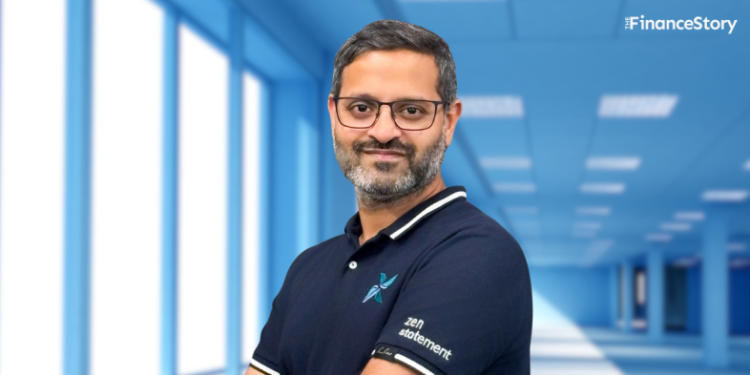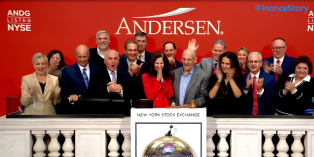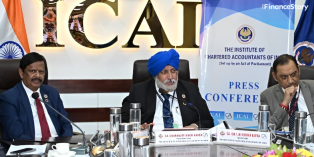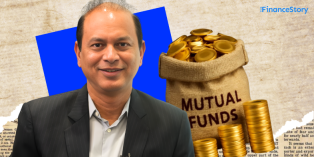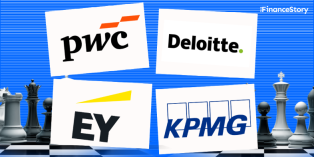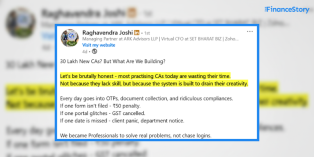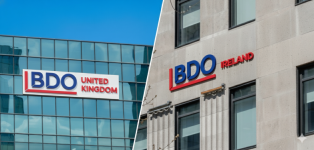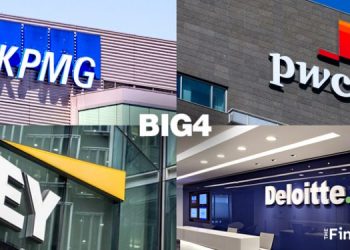- Hi, I am CA Sourabh Nolkha, founder of ZenStatement (SimpliFin) – an AI-powered cash flow solution…And in Oct’24 we secured $1.6 million in seed funding from top investors.
- It wasn’t an easy journey to fundraise…we started this process almost a year ago Sept’23!
- We pitched to over 100+ investors.
- Here’s how we networked with VCs and approached fundraising!
Let me give you a Backstory
2009. Started my career at Infosys in India where I got an incredible opportunity to work for Apple – building out their global treasury management system.
2010. Infosys sent me to the US to continue on Apple’s project. This experience sparked my fascination with the financial supply chain of products.
After that, I joined Deloitte Consulting in the US, focusing on the financial supply chain for several more years.
I spent about 7 years in the tech consulting space.
2016. Certain restrictions prompted my decision to return to India.
2017. I pursued an MBA at the Indian School of Business (ISB) to expand my horizons in business and entrepreneurship.
After ISB, I found my next adventure.
2018 onwards. Saw a huge opportunity in B2B SaaS tech.
Over the next six years, I immersed myself in the Indian startup ecosystem, taking on CFO and Sales roles across multiple companies.
2023. I quit to launch ZenStatement (SimpliFin).
Sept 2023. Started my journey reaching out to investors. Over the past year, I’ve spoken to between 50 to 100 different investors. We pitched, again and again, and learned from every experience, getting better along the way.
9th October 2024. Raised $1.62 million in Seed Round funding led by 3One4 Capital and Boldcap VC, with participation from Dynamis Ventures and Atrium Angels.
ZenStatement is also backed by,
- Michael Boyd (ex-Global Treasury Head, Apple),
- Chetan Venugopal (Founder, Pierien Services),
- Ankit Nagori (Founder, EatFit),
- Kulin Shah (Founder, Onsurity),
- Ankit Fatehpuria (Founder, Zetwerk),
- Sujayath and Navaneeth (Founders, Shop-up, Voonik)
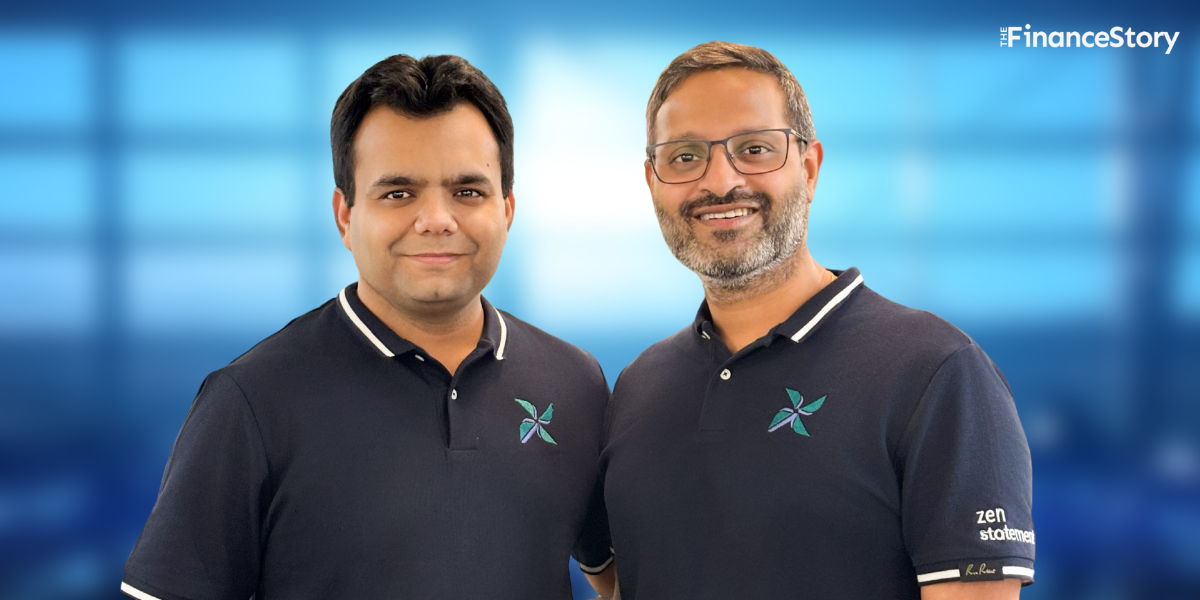
The BIG question – How did we navigate the funding journey?
Checked these boxes
Pitch deck
I did it myself. Why? We didn’t think it was necessary to hire a CA to prepare the pitch deck for seed-level investment. You know your business better than anyone else
Although ours wasn’t the best pitch deck, by a mile, I believe you should take that first attempt at creating the pitch deck yourself.
Here is how I went about it:
Key Insights from the Antler Program
We had attended the Antler’s residency program (Antler is an early-stage VC firm helping startup founders) where we received valuable inputs on the essential elements to include in our pitch deck.
We aimed to ensure we had the basics covered such as the financial hygiene aspect while preparing for the pitch.
Valuation challenges
Since there’s often minimal revenue at this stage, determining valuation can be tricky.
Different benchmarks were available to help us with these calculations. This enabled us to determine an appropriate range for our requirements.
Financial projections
Initially, seed-level financial projections may not seem crucial. However, when investors inquire about how you plan to use the funds, it’s important to have financial models in place to explain your strategy.
If you’re not finance-savvy, you might need assistance with this.
Deciding how much to fundraise
Calculating the fundraising amount involved several hypotheses. Here’s how we approached it:
Bottom-up planning
I conducted bottom-up planning to determine the resources needed.
For instance, calculate how many people I will need in my team and how much money I need to spend on acquiring leads and customers.
Generally, a little over $1 million is a reasonable target to reach that milestone.
Consider the next fundraising round
When raising money for a seed round, you have to consider the next round, Series A.
For a B2B SaaS company, you usually need to hit certain revenue milestones to raise Series A.
To reach those milestones, ensure you have enough runway in the seed round.
Rejection is part of the process
Throughout our fundraising journey, we encountered our fair share of rejections – over 100, to be precise.
Some investors told us,
- India doesn’t yet have a strong market for SaaS startups
- While others, despite branding themselves as early-stage investors, expected us to demonstrate the qualities of companies at Series A or B.
- A few turned us down only to later invest in a competing CFO stack startup.
But at the end of the day, rejections are not easy!
How do we handle rejections? Instead of taking the rejection to heart, we took their feedback to refine our next pitch.
We also reached out to some of them for introductions to potential investors, which helped us connect with the right people.
How much equity should a founder give up in the seed round?
You can expect to give up around 15% to 25% of equity to investors in a seed round. This leaves you and your co-founder with about 75%.
Then, in Series A, expect another 20% dilution, reducing your share to around 60%.
In Series B, you would face an additional 20% dilution, bringing you down to approximately 48%.
While this may seem a bit excessive, ultimately, you have to make these moves to increase your odds of success.
Even if it means a bit more dilution in the beginning, it can provide you with a longer runway.
Without this, reaching your milestones may take significantly longer.
You have raised fresh funds – Now what?
Once the fundraising is wrapped up, you have to focus on certain milestones and objectives.
There’s bound to be pressure due to the investments made. That’s no escaping that reality.
Keep them informed about what’s going well and seek assistance when you genuinely need it.
So it’s better to inform your investors of the bitter truth than to give them the gift of surprise.
To quote Narayana Murthy, “Bad news must take the elevator and good news can take the stairs.”
How big is the opportunity in the CFO tech stack space?
The CFO stack represents a global opportunity of nearly $150 billion, which is our primary focus.
This landscape is rich with potential, as this isn’t a winner-takes-all market. Success depends on the unique value proposition you offer and what resonates with clients.
I am observing a steady influx of new startups in the CFO stack space receiving funding within the US market.
It just goes to prove that there’s a real market and a real problem worth solving, that is attracting investor interest.
Closing…
My advice to everyone would be to first,
- Understand why becoming an entrepreneur might be a better option than having a job.
- Once you are clear on that front, the preparation stage comes.
- Start by informing your family.
- Connect with your network. These are the people who will support you throughout your journey.
- Once you have a product in place, speak to potential customers. This will provide you with the much-needed validation.
- Once they are convinced that it’s a genuine problem you are trying to solve, they will pay for it.
- Finally, build a team by gathering the type of people who will make your vision a reality.
With the groundwork in place, if you need venture funding, now is the time to reach out to investors.
Most importantly, if you’ve been trying to fundraise for 3 to 6 months without success, it’s wise to pause and reassess. Take the time to explore alternative strategies and refine your approach.
After this reflection, you can restart the fundraising conversation with fresh insights.




